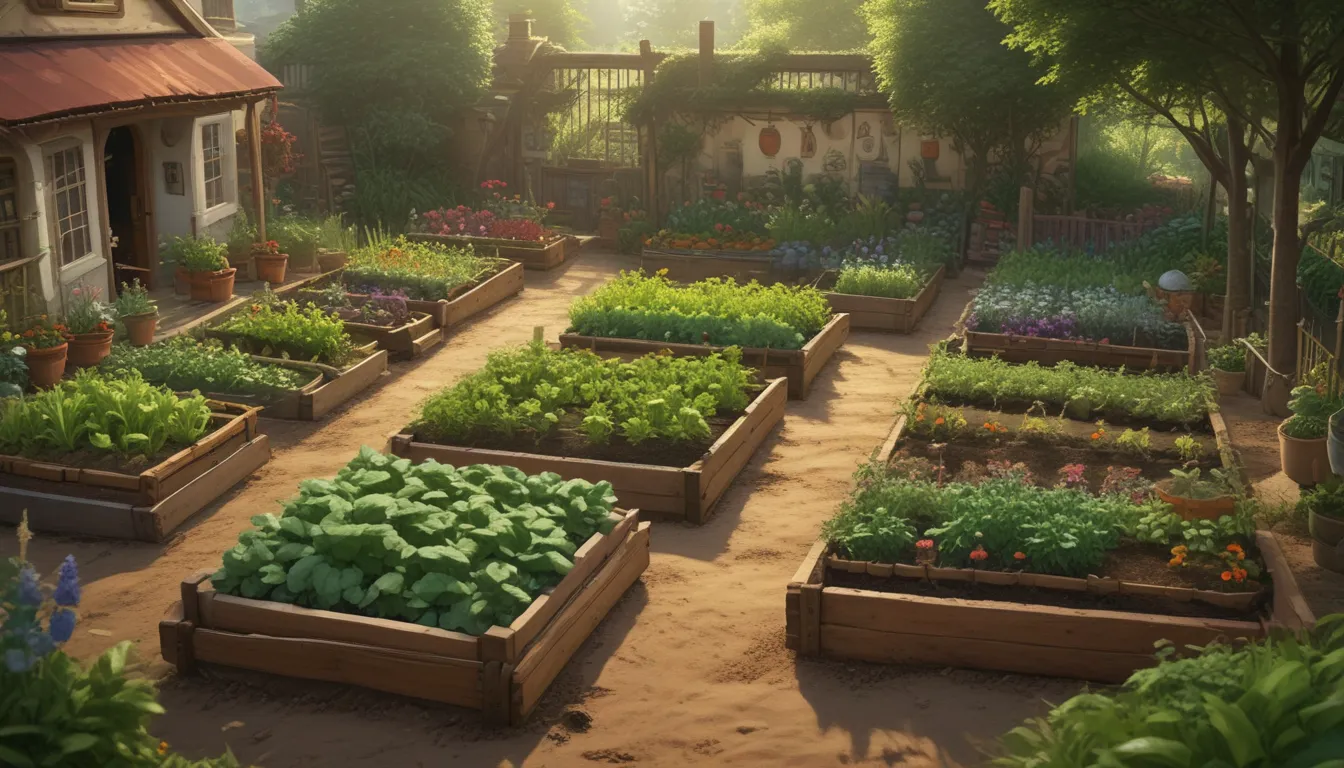The Ultimate Guide to Raised Bed Gardening: 9 Benefits and How to Get Started

Are you looking for ways to maximize your garden’s productivity while minimizing the effort required to maintain it? Raised bed gardening might just be the solution you’re looking for!
Raised bed gardening involves planting in an elevated container, whether it’s a modular kit you purchased or one you built yourself. This method not only beautifies your garden space but also offers numerous advantages for plant health, soil health, and your own well-being.
But how exactly does raising a garden bed provide all these benefits? Let’s dive in and explore the various advantages of raised bed gardening together!
9 Benefits of Raised Beds
-
Till-Free Gardening: With raised bed gardening, you can say goodbye to the backbreaking task of tilling and digging. Simply fill the raised framework with fertile soil and practice no-till gardening by adding layers of organic mulch like compost, leaves, and grass clippings throughout the growing season.
-
Rich, Easily Worked Soil: Raised beds allow you to control the soil’s content and structure, creating a nutrient-rich environment that promotes strong root growth. By combining garden soil, potting soil, and compost, you can maintain a light, fluffy texture that resists compaction.
-
Ergonomically Smart: Elevated garden beds reduce the need for bending, kneeling, and stooping while planting, weeding, and harvesting. You can even customize the height of your raised beds to suit your needs, whether you prefer waist-height structures or low borders that reduce strain on your back and knees.
-
Weed Reduction: By containing your garden within a raised bed, you can minimize weed growth and easily remove any that do sprout. Prevent bottom-growing weeds by lining the base of your raised bed with materials like cardboard, landscape fabric, or hardware cloth.
-
Block Burrowing Rodents: Raised beds can protect your crops from burrowing rodents like gophers and voles. Elevating your containers on posts or adding a bottom layer using materials like mesh wire hardware cloth can deter these pesky pests.
-
Less Soil Compaction: Raised beds filled with a fine-textured growing mix allow for quicker root development and prevent soil compaction issues often caused by foot traffic in traditional gardens. Enhanced drainage and soil warmth in raised beds promote strong root growth and extended growing seasons.
-
Higher Yields: Intensive planting in raised beds maximizes fruit and vegetable yields by utilizing all available space for growing. With nutrient-dense soil and close-clustered planting, raised beds can produce greater quantities of produce compared to traditional gardening methods.
-
Mitigate Runoff: The sidewalls of raised beds act as barriers against erosion caused by heavy rainfall or wind, protecting soil quality and preventing nutrient loss. By minimizing soil erosion, raised beds create a healthy environment for beneficial bacteria, fungi, and insects.
-
Reduce Chemicals: Organic mulching and effective weed control in raised beds reduce the need for chemical herbicides and synthetic fertilizers. This makes raised bed gardening a sustainable and cost-effective option for practicing organic gardening at home.
How to Get Started with Raised Bed Gardening
Ready to reap the benefits of raised bed gardening in your own backyard? Here are some tips to help you get started:
- Choose a Location: Select a sunny spot with good drainage for your raised beds.
- Select Materials: Decide whether to build your own raised beds using wood, concrete blocks, or other materials, or opt for a pre-made modular kit.
- Prepare the Site: Clear the area of weeds and level the ground before assembling your raised beds.
- Fill with Soil: Use a mixture of garden soil, potting soil, and compost to create a nutrient-rich growing medium.
- Plant Your Garden: Plan your layout and start planting your favorite fruits, vegetables, herbs, and flowers in your raised beds.
With these steps, you can enjoy the benefits of raised bed gardening and create a thriving garden space that maximizes productivity while minimizing effort.
In Conclusion
Raised bed gardening offers a wealth of benefits for both your plants and your well-being. By choosing to elevate your garden beds, you can create an environment that promotes healthy plant growth, reduces strain on your body, and minimizes the need for chemical interventions.
So, why not give raised bed gardening a try in your own backyard? Experience the joys of bountiful harvests, easy maintenance, and a flourishing garden space with the help of elevated containers.
Have you tried raised bed gardening in your garden? Share your experiences in the comments below! And for more organic gardening tips, consider exploring resources like “How to Make and Use Comfrey Tea Fertilizer” or “The Ultimate Guide to Understanding Garden Soil.”
Incorporating raised bed gardening into your landscaping can bring a whole new level of efficiency and productivity to your gardening experience. Whether you’re a beginner or a seasoned gardener, embracing this method can offer a range of benefits that transform your outdoor space into a thriving oasis of growth and abundance. So, roll up your sleeves, get your hands dirty, and elevate your gardening game with raised beds!





